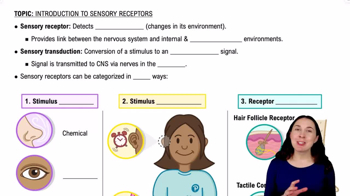Textbook Question
Parasympathetic ganglia are typically:
a. Located along the spinal cord
b. Located near their target cells
c. Located within the central nervous system
d. Parasympathetic neurons do not synapse in ganglia
378
views
 Verified step by step guidance
Verified step by step guidance Verified video answer for a similar problem:
Verified video answer for a similar problem:

 1:56m
1:56mMaster Function of the Parasympathetic Nervous System with a bite sized video explanation from Bruce Bryan
Start learning